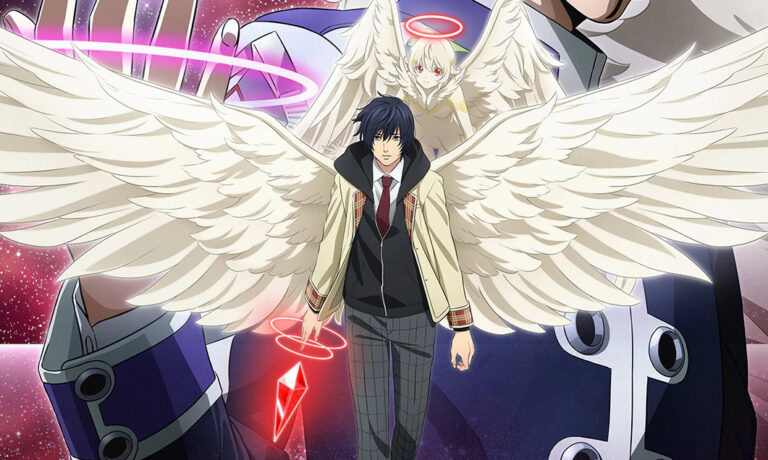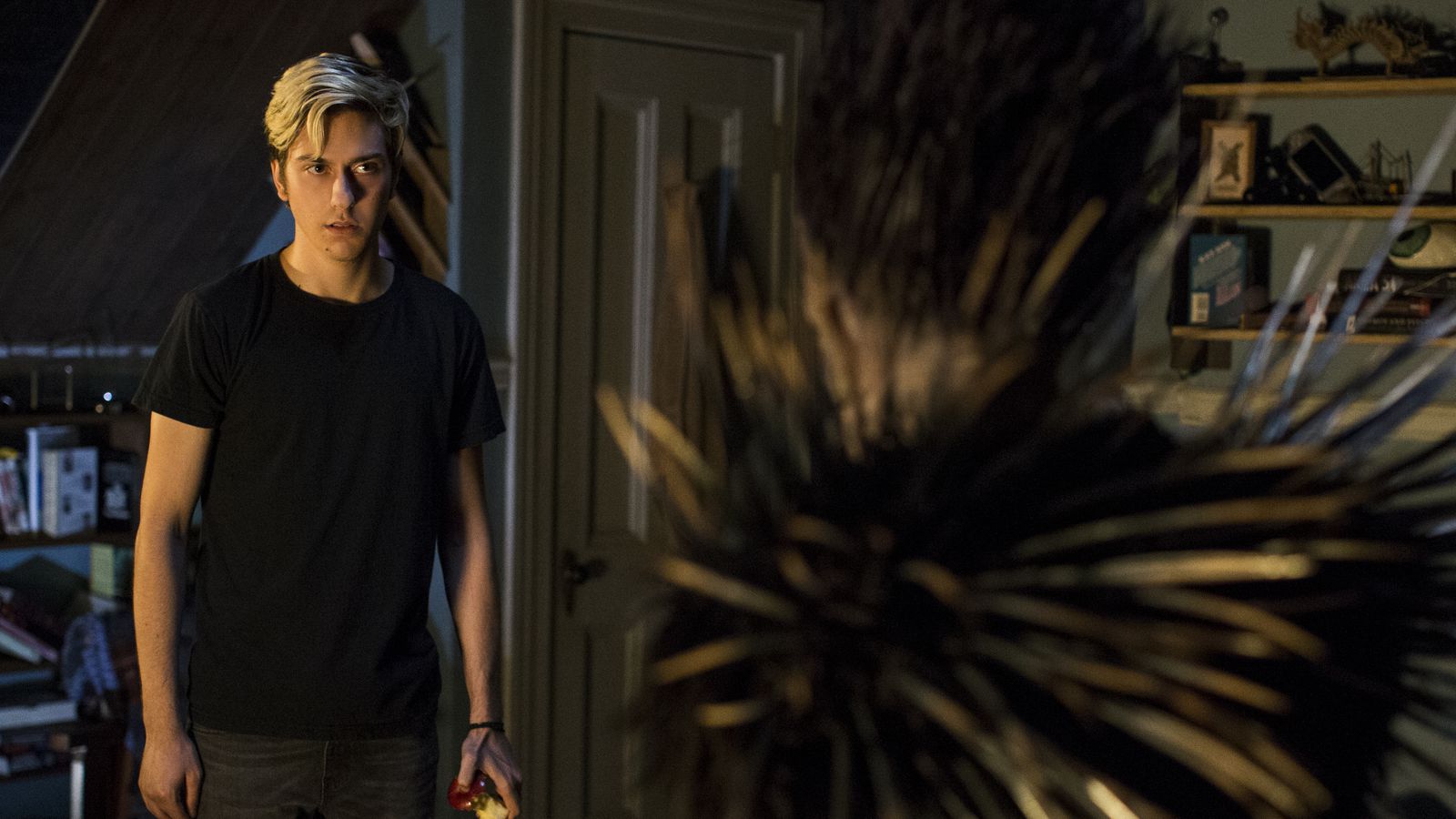
Who is the lead in Death Note?
Light Yagami. Light Yagami is the male lead of the Death Note anime series. He’s a brilliant and popular high school student who excels at sports and anything else he sets his mind to. At home, Light’s family adores him and, like his father, he holds a strong sense of justice. In the beginning, Light intends to use the Death Note book to get rid ...
Why does Light use the Death Note book?
In the beginning, Light intends to use the Death Note book to get rid of criminals and bring peace to the world. However, this noble idea is soon corrupted and he sets his sights on becoming a god.
What does Wingard's Death Note look like?
Unlike the anime, Wingard’s Death Note book falls from the sky after a heavy storm. At first, the notebook looks the same as it does in the anime with the words “Death Note” scratched on the cover. However, at closer inspection, the book featured in the Netflix film has a strange triangle and circle symbol in the top corners.
What is the anime L?
Anime L Is Calm, Cool and Collected. In the anime series, L is a world-renowned detective who takes on the challenge of catching Kira. He is a brilliant young man, but many doubt his abilities upon first meeting him because of his messy appearance.
Why does light survive the end of the movie?
At the end of the film, Light survives because Mia burns the page where his name is written. However, Rule LXII states: “Death will still take place even if that Death Note or the part of the note in which it has been written is destroyed, for example, burned into ashes, before the stated time of death.”.
Who is L in Netflix?
While Netflix’s L ( Lakeith Stanfield) is similar to his anime counterpart, his performance and delivery is much more passionate. This expressiveness is most notable when L’s assistant, Watari, succumbs to the hand of Kira.
Is Netflix Ryuk bored?
The Netflix Ryuk, like his anime counterpart, is extremely bored and believes that you need to spice things up or suffer the consequences. And although Ryuk is memorable and stays true to the anime, there weren’t enough scenes that showed his boredom and how he manipulated things behind-the-scenes.
How to compare Death Note to Netflix?
In the anime the black journal falls from the sky into the school yard, with the simple words "death note" seemingly scratched on the cover. The same seen is shown in the first couple of seconds of the live-action trailer, with a rainy and moody twist. The Death Note itself looks pretty similar, a black leather bound journal with Death Note scratched into the front. However the Netflix version has two triangles in the top corners, as well as wear and tear on the front, unlike the original. See for yourself below:
What is the death note?
Based on the famous Japanese manga written by Tsugumi Ohba and Takeshi Obata, Death Note follows a high school student who comes across a supernatural notebook, realizing it holds within it a great power; if the owner inscribes someone's name into it while picturing their face, he or she will die. Intoxicated with his new godlike abilities, the young man begins to kill those he deems unworthy of life.
Where is Death Note set?
First off, the story is set in Seattle, this is seen in an overview the city shot showing the Seattle skyline. This is obviously a change from the original Japan setting in the anime. With this change comes a change in characters race, since it is set in America instead of Japan. Lets not dive too deep into the whole "white washing" controversy here, but instead focus on the scenes in the trailer side by side with their anime counterparts. Check them out in the slide show below:
Is the Death Note better stage by stage?
Besides the fact that seeing a character figure out and use the Death Note would be better in stage-by-stage format, the fact that the book can pass from one owner to another creates the opportunity for multiple seasons or even an anthology format that could present very different circumstances and perspective for each Death Note holder.
Is Death Note a good hook for Final Destination?
The Final Destination film series made a franchise hook out of elaborate kills by some unseen hand of fate. Death Note operates in much the same way, and the creative ways of using the Death Note to kill could provide an equally good hook for a series.
Is Death Note manga or anime?
Death Note 's premise was presented first in manga and then anime, and there's a reason those formats have served it well. It's not hard to see why: the premise of being able to kill whomever you wrote into a mystical book of death comes with a lot of trial, error, and slow-burn character arc that is much better suited for an episodic series rather than a two-hour movie.
Is Death Note live action on Netflix?
Netflix has premiered its live-action version of the manga/anime Death Note, and the reaction from fans has been pretty volatile. While it's arguable which elements of the Death Note Netflix movie work, and which don't, there's been one bit of consensus: the film seems to cram too much story into too little space.
Is Death Note a myth?
The thing about Death Note is that it isn' t just a small story; it's an entire mythology. The Death Note, the Shinigami, and even the saga of Light Yagami in the manga/anime is much more extensive then the introductory appetizer we got in the Netflix movie.
When did Death Note come out?
Death Note was slated to make its North American television premiere in Canada, as part of YTV's Bionix block, on September 7, 2007. However, the show was removed from the schedule at the last minute and the Canadian premiere was pushed back to October 26, 2007, at 10:00 p.m.
What is the Death Note?
In Tokyo, a disaffected high-school student named Light Yagami finds the "Death Note", a mysterious black notebook which can kill anyone as long as the user knows both the target's name and face. Initially terrified of its god-like power, Light considers the possibilities of the Death Note's abilities and kills high-profile Japanese criminals, then targeting international criminals. Five days after discovering the notebook, Light is visited by Ryuk, a " Shinigami " and the Death Note's previous owner. Ryuk, invisible to anyone who has not touched the notebook, reveals that he dropped the notebook into the human world out of boredom and is amused by Light's actions.
Why did Tsugumi Ohba make Death Note?
Author Tsugumi Ohba wanted to create a suspense series because the genre had few suspense series available to the public. After publication of the pilot chapter, the series was not expected to receive approval as a serialized comic. Learning that Death Note had in fact received approval and that Takeshi Obata would create the artwork, Ohba said, he "couldn't even believe it". Due to positive reactions, Death Note became a serialized manga series.
How did the Death Note process begin?
The Death Note process began when Ohba brought thumbnails for two concept ideas to Shueisha ; Ohba said that the Death Note pilot, one of the concepts, was "received well" by editors and attained positive reactions by readers. Ohba described keeping the story of the pilot to one chapter as "very difficult", declaring that it took over a month to begin writing the chapter. He added that the story had to revive the killed characters with the Death Eraser and that he "didn't really care" for that plot device.
How many Death Note manga chapters are there?
The series ran in Shueisha 's Weekly Shōnen Jump from December 1, 2003 to May 15, 2006. The series' 108 chapters were collected into twelve tankōbon volumes by Shueisha, released from April 2, 2004 to July 4, 2006. A one-shot chapter, titled "C-Kira Story" (Cキラ編, C-Kira-hen), was published in Weekly Shōnen Jump on February 9, 2008. Set two years after the manga's epilogue, it sees the introduction of a new Kira and the reactions of the main characters in response to the copycat's appearance. Several Death Note yonkoma (four-panel comics) appeared in Akamaru Jump. The yonkoma were written to be humorous. The Akamaru Jump issues that printed the comics include 2004 Spring, 2004 Summer, 2005 Winter, and 2005 Spring. In addition Weekly Shōnen Jump Gag Special 2005 included some Death Note yonkoma in a Jump Heroes Super 4-Panel Competition. Shueisha re-released the series in seven bunkoban volumes from March 18 to August 19, 2014. On October 4, 2016, all 12 original manga volumes and the February 2008 one-shot were released in a single All-in-One Edition, consisting of 2,400 pages in a single book.
What does Ryuk write down in his Death Note?
Ryuk instead writes down Light's name in his Death Note, as Light declares himself as god of the new world before dying. Three years later, Near, now functioning as the new L, receives word that a new Kira has appeared.
What is the plot device of the Death Note?
The core plot device of the story is the "Death Note" itself, a black notebook with instructions (known as "Rules of the Death Note") written on the inside. When used correctly, it allows anyone to commit a murder, knowing only the victim's name and face. According to the director of the live-action films, Shusuke Kaneko, "The idea of spirits living in words is an ancient Japanese concept.... In a way, it's a very Japanese story".

Popular Posts:
- 1. what male anime character am i
- 2. what are the best anime websites
- 3. did hajime no ippo anime end
- 4. a certain magical index iii anime planet
- 5. con nhà giàu tập 6 anime
- 6. how to make anime roblox characters
- 7. where to get more durability in anime fighting simulator
- 8. is persona anime good
- 9. how to get shards anime fighters
- 10. how to watch anime on zoom